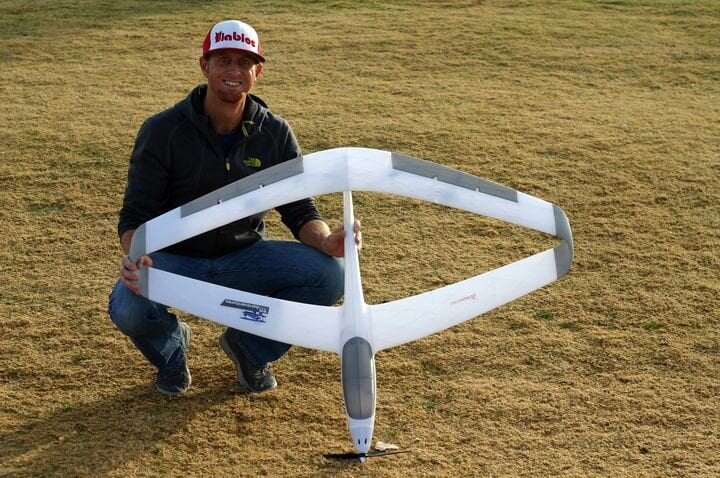![3D printed RC aircraft [Source: SolidSmack]](https://fabbaloo.com/wp-content/uploads/2020/05/image-asset_img_5eb050869d44f.jpg)
Eric Haddad is the founder and Pilot in Command of 3DAeroventures, a Texas-based outfit specializing in 3D printed RC aircraft. Some are traditional, some are experimental, all show what the future holds for RC aeronautic design.
3D printing is no stranger to prop-powered aircraft, with many an STL file available for various types and styles of drones, racers, copters, and planes. However, with his background in design, manufacturing, and RC aircraft, Eric is planning to bring a unique angle to the RC aircraft hobby, making it and 3D printing much more accessible, with 3DAeroventures.
He spun up the venture a year ago out of a passion that grew from childhood, making and flying model airplanes with his father. Through the years of school and industry, helping others to realize products in manufacturing, and his experience with 3D modeling and 3D printing, his passion grew even stronger.
I had the honor of speaking with Eric to find out what inspired his interest, how SOLIDWORKS helps with the 3D printed RC aircraft designs, and what he’ll be rolling out to the tarmac with 3DAeroventures.
SolidSmack: What inspired your interest in design and manufacturing?
Eric Haddad: I was always kind of a builder as a kid. I started making planes with my dad when I was 12 so building has always been something I’m into. I made model planes or remote control airplanes, back then, from balsa wood kits. My dad did most of the building, I would help a little, but he’d do a lot of building, then I would fly them. We’d go every Sunday and he was super supportive of the hobbies my two brothers and I had. I did the first 3DAeroventures video with my son. I’m excited to support him and help however I can like my dad was for me.
I’ve kept a balance between the analytical and creative way of thinking, so after going into product development, I got my master’s degree in manufacturing engineering with a minor in art design. I did a lot of artistic design projects in CAD then got a job at James Avery jewelry company in product development. During that time I had side jobs doing product development work with small businesses. Since 2015, I’ve been full time helping startups and small business with product development and started 3DAeroventures last year, diving back into my passion for RC airplanes.
SS: Were you always detail-oriented? Did jewelry design nurture that?
EH: James Avery changed me big time. I never thought I’d go into the jewelry industry, but that company is surprisingly high tech. It was a cool mix of technology and art. They were completely vertically integrated, so they do everything from concept design all the way to owning their own retail stores – they would even build their own furniture for the retail stores. Their goal was to make 10,000 pieces a year all with a handmade look. You always had to have an eye for detail. I was in product development, so we pulled the new designs from concept and transitioned them to manufacturing. Oftentimes, designers would hand us exactly what they want but it might not be manufacturable, so we had to maintain the original intent including as much detail as possible.
SS: So you kept up with your hobby on the side and progressed into 3DAeroventures?
EH: Exactly. I would get busy but always had a plane that was flyable to take out and get in the air. The technology has changed so much since I was a kid. Today, you can buy a ready-to-go foam plane with really light electronics and a really powerful motor. Then I saw 3D printing planes was a possibility, with other companies selling STL files to print your own planes. With my design background and CAD experience, I knew how to create my own designs, so thought I’d dive into designing my own planes. It really kickstarted my passion again for the hobby, so I have a lot of energy to put into this.
![3D printed parts for the 3DAeroventures ‘Infinity Wing’ RC aircraft [Source: SolidSmack]](https://fabbaloo.com/wp-content/uploads/2020/05/image-asset_img_5eb05086e489e.jpg)
SS: Do you do all the design concept in SOLIDWORKS?
EH: Yeah. Everything’s done in SOLIDWORKS desktop and I’ve dabbled a little on the 3DEXPERIENCE platform, using xShape for some of the concept work or, at least, getting an external shell for the more organic features. It’s all been great software for doing this sort of thing, from tip to tail and internal structure.
Read the rest at SolidSmack

